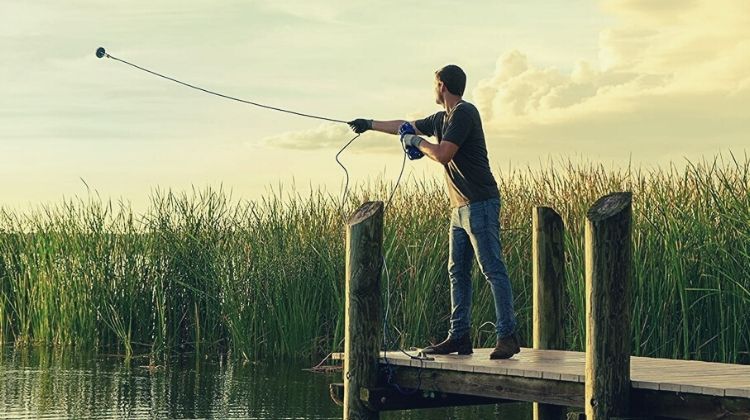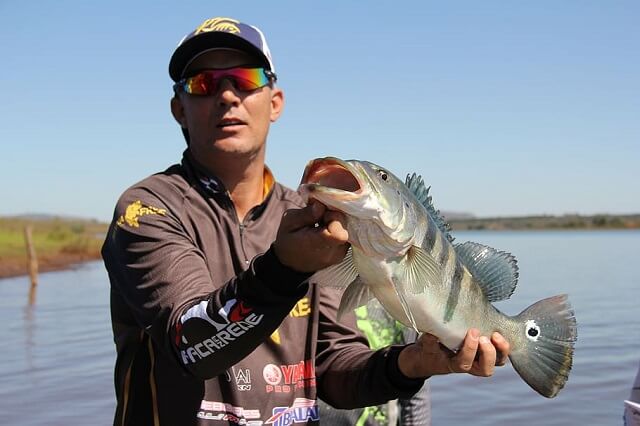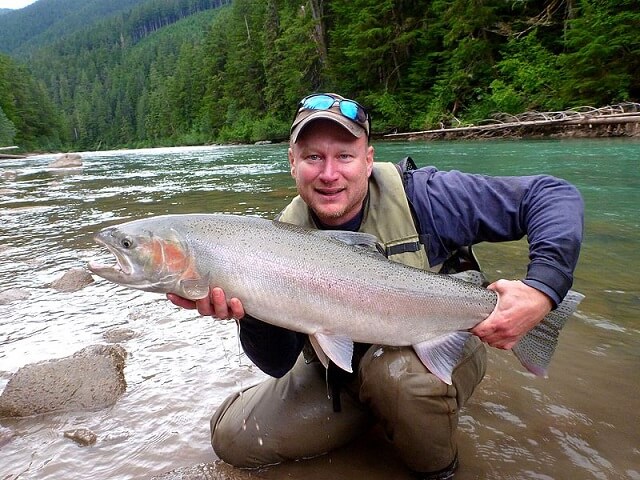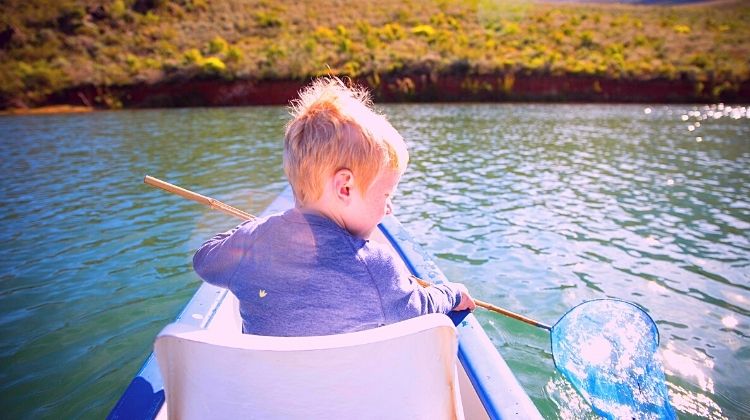What You Need To Know Before Going Deep Sea Fishing?
There are a lot of people who have never gone deep sea fishing before. If you’re one of those people, there’s a few things you should know first so your experience is as enjoyable as possible.
The purpose of this blog post is to introduce some concepts and tips that will help make your deep sea fishing trip more successful.
This blog post will cover topics such as what equipment you need to bring, deep sea fishing tips and general safety precautions while out on the water.
Deep Sea Fishing: What You Need To Carry?
Fishing Tackle Box
First and foremost, you need a tackle box. This is used to hold all your fishing gear: lures, hooks, line, etc. Make sure not to skimp on this investment since it can make future trips more frustrating if you don’t have what you need.
Personally I recommend the Plano 3444 Stowaway because of its ability to fit into small spaces (so it’s easy to transport) yet still holds a lot of gear (500+ pieces).
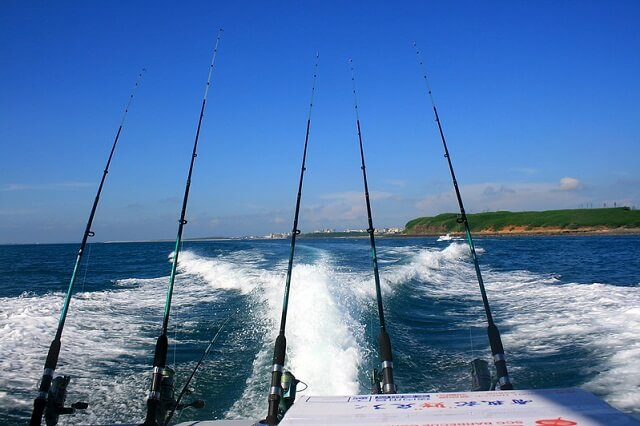
Choosing A Fishing Rod
Next up, choosing a fishing rod. Now this one seems like a no-brainer; buy the cheapest one! Not quite… there are certain types of rods that excel for specific reasons. Typically people choose between a spinning rod or a baitcasting rod.
The spinning rods are much lighter and therefore easier to cast, but don’t have as much backbone as the baitcasting rod. Spinning rods are best for those just starting out because they’re easy to use and can catch fish even if you don’t know how to “fish.”
A great spinning rod that is affordable and light is the Abu Garcia Black Max.
Baitcasting rods on the other hand require some degree of skill before you can effectively use it. These types of rods excel at catching larger fish because they offer more backbone than a spinning rod.
If you plan on going after bigger fish such as tuna or sharks, I highly recommend this type of rod (although they are more expensive).
A great baitcasting rod is the Shimano Sellus.
Choose A Reel
You will also need to choose a reel for your fishing rod. These typically come in 2 types: spinning or baitcasting. It’s important to go with the same type of reel that you picked out for your rod – so either spinning or baitcasting.
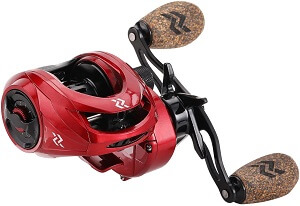
Spinning reels generally hold less line than baitcasting reels, but allow you to control how fast/slow the spool spins when reeling it back in.
This helps reduce “backlashes” (when too much line comes out faster than you can reel).
Spinning reels also tend to be cheaper as well since they’re used in freshwater fishing as opposed to sea fishing. In fact, the Abu Garcia Black Max was previously mentioned as a spinning rod, but also comes with a matching spinning reel with 4 ball bearings.
If you give this combo a shot and don’t like it, the spinning reel is compatible with baitcasting rods as well.
Baitcasting reels excel at sea fishing because they can hold more line than a spinning reel (upwards of 200 yards), which allows for longer casts.
As with any fish fighting equipment though, you need to make sure that your line strength matches what fish you’ll be catching otherwise you risk breaking or losing your catch altogether.
Choosing A Bait
While there are literally hundreds of different lures and baits out there, for the sake of time we’re going to mention a couple that are very effective. These two types of bait can be used interchangeably depending on the conditions and type of fish you want to catch.
The first type is what’s called a soft plastic lure. It typically consists of some sort of squid/fish/worm-type design with rattles inside it that mimic sounds that fish make when looking for food or trying to attract a mate.
You can buy these pre-made or if you have some patience, you can actually mold your own custom designs at home! I recommend the ZMan GrubZ .
Second type is a hard plastic lure. This type of lure has two fishing line hooks on either side of it, so you can fish it vertically – making it very effective when fishing above underwater structure like rocks/trees/bridges. It also makes a noise in the water to attract fish. I recommend the Rapala X-Rap.
Choosing A Float/Weight
Lastly, you need something to keep your bait at a certain depth in the water while still allowing it to move around naturally. This is where floats/weights come into play.
The general rule of thumb is that for fast moving waters (creeks or rivers), use a weight that keeps your line down 8-12 inches off the bottom.
For slower moving rivers, choose a weight that will keep your bait at 2-4 feet below the surface. For lakes, use terminal tackle (see below) to achieve these depths with or without weights.
Terminal Tackle
Lastly, you’re going to need some type of terminal tackle for all of this stuff if you want to effectively catch fish. Terminal tackle is basically anything that isn’t your actual fishing line/rod/reel combo – it’s the hard parts like hooks and swivels.
You can buy these pre-made in most department stores for relatively cheap, but I highly recommend buying them online where they are much more affordable . Good places include Amazon , BassPro , Cabela’s , etc.. To name a few:
Sinkers/Slip Sinkers – used to keep your bait submersed depending on the current. You can also use lead wire for this purpose if you want to save money.
Float/Bobber – these are typically round with a notch cut out of one end that can be adjusted up and down. It’s attached to the line above the weight and allows you to adjust how deep your bait is in the water. These come in many shapes and colors.
I recommend buying multiples of each (like 10 floats) so that you always have spares . A float bobby combo like this would be all you need as well: Flash Float Bobbers .
So there you have it! That’s a quick overview of some basic equipment you’ll need. As always, if you have any questions feel free to ask in the comments below – don’t forget to subscribe for updates and let us know what else we should be covering 🙂
Safety precautions while deep sea fishing:
Before heading out to sea, fishermen are requested to comply with the following safety precautions which are considered as very important.
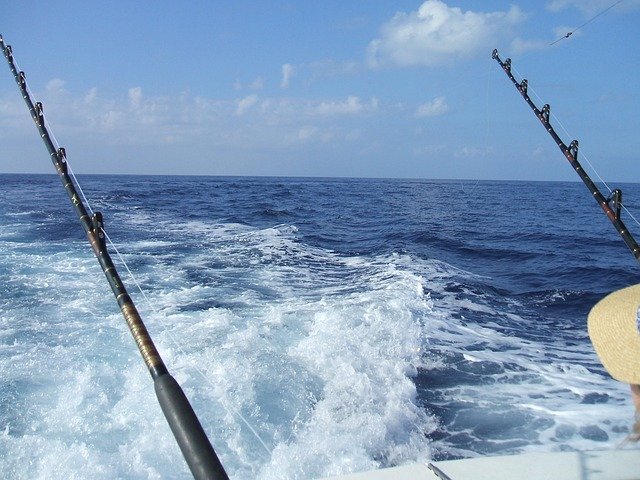
Prevent your boat from capsizing.
To prevent your boat from capsizing due to high waves or strong wind, anchor it properly especially in rough weather conditions. Always try to have spare life vests available for everyone on board so they can use them when necessary.
Keep the engine in good condition.
Check the engine of your boat before you set out on a trip to sea and ensure that it is working well. You can also hire a professional mechanic who will do this job for you. Never overload the engine with too much load as this could invite trouble.
Avoid using any mobile or electronic device while boating.
You should avoid using mobile phones, radio sets and other electronic devices when you’re on a boat if you don’t want to invite trouble. In case of distress, these gadgets can serve as a source to reach rescue services conveniently. It is preferable to use them only when you’re sure that the vessel is not moving and there is no risk involved in it.
Don’t consume alcohol while boating.
It is strictly advised against consuming alcohol when you’re on a boat. Even if you are not intoxicated, your senses may be affected due to the wind pressure which could lead to accidents.
Ensure to carry proper tools.
Before you set out on a deep sea fishing trip, make sure that you carry all the necessary tools required to carry out your job effectively and safely. These include lures, hooks, rod holders etc. Fishing line should also be strong enough to handle any large fish that gets caught in it during the trip.
To ensure safety, you should also carry a marine VHF Radio and GPS with extra battery backup for emergencies. You can also carry fishing sunglasses, flares, sunscreen lotion and mosquito repellent to stay safe from the harsh weather conditions out there at sea.
Tips and tricks for successful deep sea fishing:
1) Ensure to carry the right fishing tools.
2) Use live bait for better chances of catching fish.
3) Don’t waste your time chasing small fishes as they are not worth it. You should focus on larger fish which can fetch good money for you.
4) Never leave the boat unattended without any supervision even if one person has to stay back on the boat.
5) Never overload your fishing equipment with too much weight as this could lead to accidents.
6) Keep an eye out for any water currents at all times and adjust the sails accordingly to avoid drift. NEVER ignore these signals which are sent by nature itself, because ignoring them can prove deadly.
7) Keep track of your heading and position at all times. Do not try to change the vessel’s direction abruptly when you are in deep waters so that you don’t lose your direction.
8) Avoid fishing during strong winds or rough weather conditions as these can be the most dangerous conditions for fishers.
9) Always keep an eye on the weather forecast before you set out on a deep sea fishing trip and never go fishing outside restricted zones.
10) Try to hire an experienced skipper who is familiar with the area and knows all the safest routes to take during a potentially risky situation and also about how to respond in case certain situations, like if you encounter jellyfish or sharks on your trip.
11) Do not try to change the fishing equipment when you are in deep waters as this can be very dangerous and cause accidents. You should first come back on land before doing so .
12) NEVER ignore an engine failure signal, even if it means returning empty-handed for the day, because ignoring these signals can put your life in danger.
That’s all for today. I hope that after reading all of the tips and information above, you have a good idea of what you need for deep sea fishing. Remember to follow all safety precautions.
Stay safe and have fun fishing.

Andy Allan, a well-known fishing enthusiast and hiking professional, runs the blog. Andy is a Georgia-based outdoor enthusiast. He has hiked throughout the United States and parts of Australia.
He is also well-known for his passion for fishing, particularly for bass, steelhead, and salmon. Andy discusses his adventurous life, fishing and hiking equipment reviews, and blog posts on hiking and fishing tips and tricks in Outdoors Activity.

